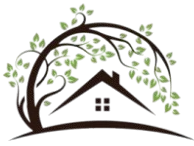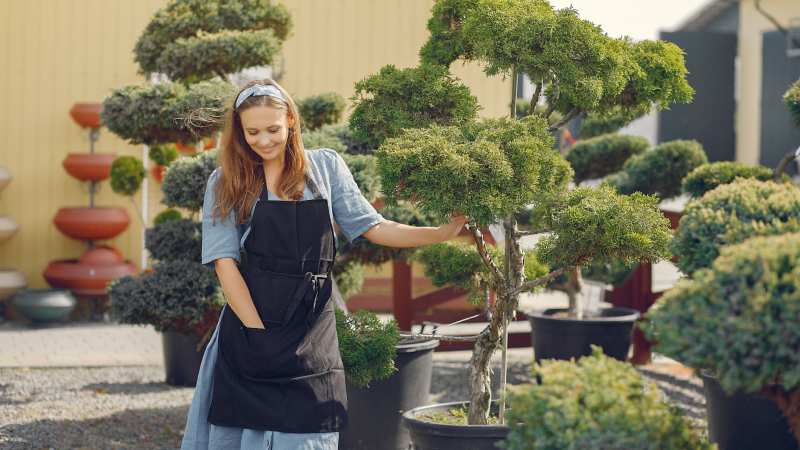Designing an outdoor space that is beautiful, functional, and inviting takes careful planning. Many homeowners dream of having a backyard that not only looks stunning but also serves a real purpose — a place for relaxation, gatherings, and family activities. The challenge lies in balancing form and function, ensuring that every element complements your lifestyle while enhancing the natural beauty of your surroundings.
If you’re wondering how to plan a landscape design that’s both practical and gorgeous, this guide covers everything you need to know. From understanding your space to selecting plants, lighting, and hardscape, you’ll learn how to create an outdoor area that is not just aesthetically pleasing but also easy to maintain and enjoyable year-round.
1. Understanding the Purpose of Your Outdoor Space
Before starting any design, you must define what you want from your landscape. Think of your outdoor area as an extension of your home.
Ask yourself:
-
Will it be a place for entertaining guests?
-
Do you need a safe play area for children?
-
Would you like a peaceful retreat for reading or gardening?
Your answers will shape every decision moving forward. For example, a family with young children may prioritize open grassy areas, while someone who loves entertaining might want a patio or outdoor kitchen. When considering how to plan a landscape design that’s both practical and gorgeous, remember that beauty should serve a purpose.
2. Assessing Your Space and Environment
Take a good look at what you’re working with. Every property has unique features — and challenges.
Key Factors to Assess:
-
Sunlight and Shade: Observe how the sun moves throughout the day to determine ideal planting zones.
-
Soil Type: Test the soil for nutrients and drainage capacity; this affects plant health.
-
Climate: Choose plants and materials suitable for your region’s weather.
-
Topography: Sloped areas may need terracing or retaining walls for stability and design flow.
Understanding your property’s natural layout helps you work with — not against — its characteristics. The best designs enhance what’s already there instead of forcing unnatural changes.
3. Creating a Functional Layout
A good landscape design, much like a well-organized home, has flow and structure. Define zones for various activities and connect them logically with walkways or transitions.
Zoning Ideas:
-
Entertainment Area: Patio or deck with seating and lighting.
-
Relaxation Zone: Hammock, garden bench, or water feature.
-
Play Space: Open lawn or sandbox area for children.
-
Utility Area: Storage for tools, bins, or compost.
When planning, consider how these zones interact. Paths and stepping stones create smooth movement, while borders and plants define boundaries. This organization helps maintain practicality without compromising beauty.
4. Choosing the Right Plants
Plants form the backbone of any landscape design. To make your yard look lush and cohesive, select plants based on their function, maintenance needs, and visual appeal.
Tips for Smart Plant Selection:
-
Layer Your Greenery: Combine tall trees, medium shrubs, and low ground covers for depth.
-
Go Native: Native plants adapt easily to local conditions, saving water and effort.
-
Mix Textures and Colors: Contrast leaf shapes and hues to create interest throughout the year.
-
Think Seasonally: Choose species that bloom at different times for continuous color.
Using these principles ensures your garden remains dynamic and visually balanced — one of the secrets in learning how to plan a landscape design that’s both practical and gorgeous.
5. Integrating Hardscape Elements
Hardscape — non-living features like patios, pathways, and walls — add structure, balance, and durability to your outdoor space. They also define areas for functionality and flow.
Common Hardscape Features:
-
Pathways: Stone, brick, or gravel walkways lead guests naturally through the space.
-
Patios and Decks: Provide comfortable areas for dining or lounging.
-
Retaining Walls: Control soil erosion and create tiered garden levels.
-
Pergolas or Gazebos: Offer shade and architectural beauty.
When designing, ensure hardscapes complement your home’s style. For instance, sleek stone patios fit modern homes, while rustic wood decks blend well with country cottages.
6. Lighting: The Finishing Touch
Landscape lighting transforms your yard from ordinary to enchanting. It enhances safety while adding ambiance during the evening hours.
Lighting Tips:
-
Path Lights: Illuminate walkways to prevent accidents.
-
Accent Lights: Highlight architectural features or trees.
-
String Lights: Add warmth to patios or decks.
-
Motion Sensors: Increase security and efficiency.
Good lighting enhances the design you’ve built, emphasizing key features and creating an inviting nighttime atmosphere.
7. Balancing Functionality and Beauty
The essence of how to plan a landscape design that’s both practical and gorgeous lies in balance. Each design decision should harmonize purpose and aesthetics.
-
Use Symmetry Thoughtfully: Balanced designs look organized but should avoid feeling too rigid.
-
Add Personal Touches: Incorporate decor that reflects your personality — sculptures, planters, or fountains.
-
Maintain Open Space: Avoid overcrowding; give your landscape room to breathe.
-
Focus on Sustainability: Eco-friendly gardens with rain barrels, native plants, and solar lights reduce waste and upkeep.
Functionality ensures your outdoor space meets your family’s needs, while beauty makes it a joy to experience.
8. Seasonal Maintenance for Lasting Appeal
Even the most beautiful landscape requires care. Regular maintenance ensures longevity and keeps your design looking fresh.
Maintenance Checklist:
-
Prune shrubs and trees to encourage growth.
-
Remove weeds and dead plants promptly.
-
Refresh mulch to retain soil moisture.
-
Clean pathways and outdoor furniture regularly.
-
Adjust irrigation systems as seasons change.
Consistent care preserves the investment you made and allows your garden to thrive year-round.
9. Adding Comfort and Personality
Beyond plants and pathways, personal touches make your landscape unique. Think of your yard as an outdoor living room — stylish, functional, and comfortable.
Ways to Personalize Your Space:
-
Outdoor Furniture: Choose weather-resistant pieces for comfort and durability.
-
Decorative Elements: Planters, garden art, or a small fountain add charm.
-
Natural Accents: Use stones, driftwood, or sculptures for organic beauty.
-
Color Coordination: Coordinate cushions, planters, and flowers for visual harmony.
Your outdoor space should reflect your lifestyle — elegant yet functional, relaxed yet refined.
10. Common Mistakes to Avoid
Even the best design ideas can fall short if execution isn’t done thoughtfully. Avoid these common pitfalls when creating your landscape:
-
Overcrowding Plants: Give every plant space to grow naturally.
-
Ignoring Drainage: Poor water management leads to flooding and root rot.
-
Neglecting Maintenance: Even low-maintenance landscapes need regular attention.
-
Skipping a Plan: Always sketch your layout before starting; it saves time and money.
By planning carefully, you’ll create a long-lasting and enjoyable outdoor retreat.
11. Sustainable and Eco-Friendly Landscaping Ideas
Modern homeowners increasingly value sustainability. Eco-conscious landscaping not only protects the environment but also lowers maintenance costs.
Eco-Friendly Ideas:
-
Native Plant Gardens: Reduce water use and support pollinators.
-
Permeable Paving: Allows rainwater to seep into the ground, preventing runoff.
-
Composting: Turn yard waste into nutrient-rich soil.
-
Rain Gardens: Capture stormwater naturally to irrigate plants.
Sustainable choices ensure your design remains beautiful while contributing to environmental well-being.
12. Bringing It All Together
Creating a landscape that’s both functional and gorgeous doesn’t require an unlimited budget — just thoughtful planning and consistent care. When deciding how to plan a landscape design that’s both practical and gorgeous, focus on harmonizing nature, structure, and personal taste.
The best outdoor spaces evolve with your lifestyle. Start with a solid foundation, select the right materials, and nurture your design over time. With the right approach, your yard can become a space that enhances your home’s beauty, comfort, and value for years to come.
FAQs About Landscape Design
1. What is the first step in planning a landscape design?
Start by assessing your space, setting goals, and identifying how you’ll use the area. Understanding your needs ensures the design fits your lifestyle.
2. How can I make my small yard look larger?
Use vertical gardening, light-colored hardscape, and layered planting to create depth and space illusion.
3. What are low-maintenance plants for landscaping?
Native species like lavender, ornamental grasses, and succulents are easy to care for and environmentally friendly.
4. How often should I update my landscape design?
Every few years, reassess your space. Minor updates like new plants or lighting can refresh your landscape without a full redesign.
5. Is professional landscaping worth it?
If you’re unsure where to start or have complex features, hiring a professional can save time, prevent mistakes, and ensure long-lasting results.
6. How can I keep my landscape sustainable?
Opt for native plants, efficient irrigation systems, and organic soil care practices to reduce waste and preserve resources.

